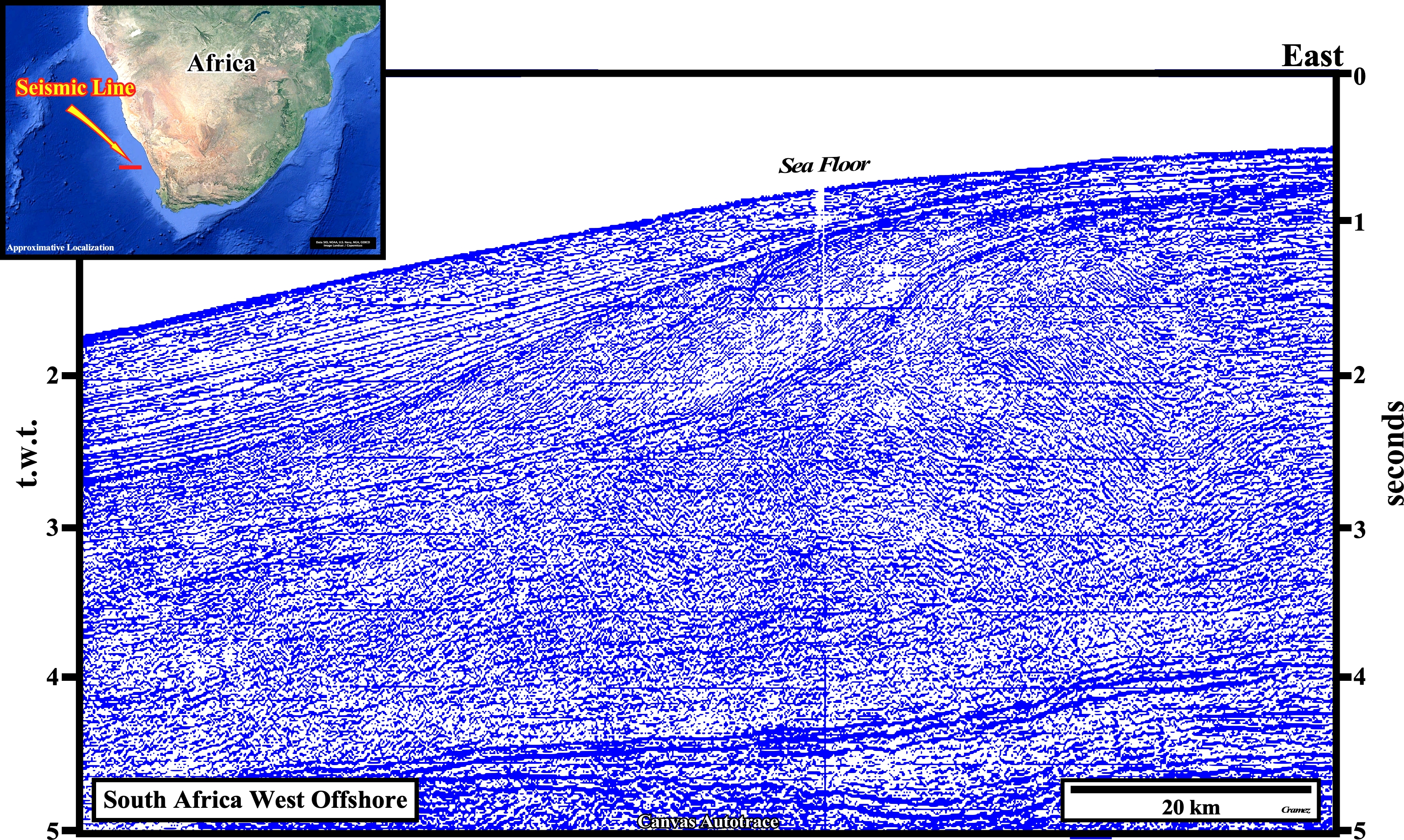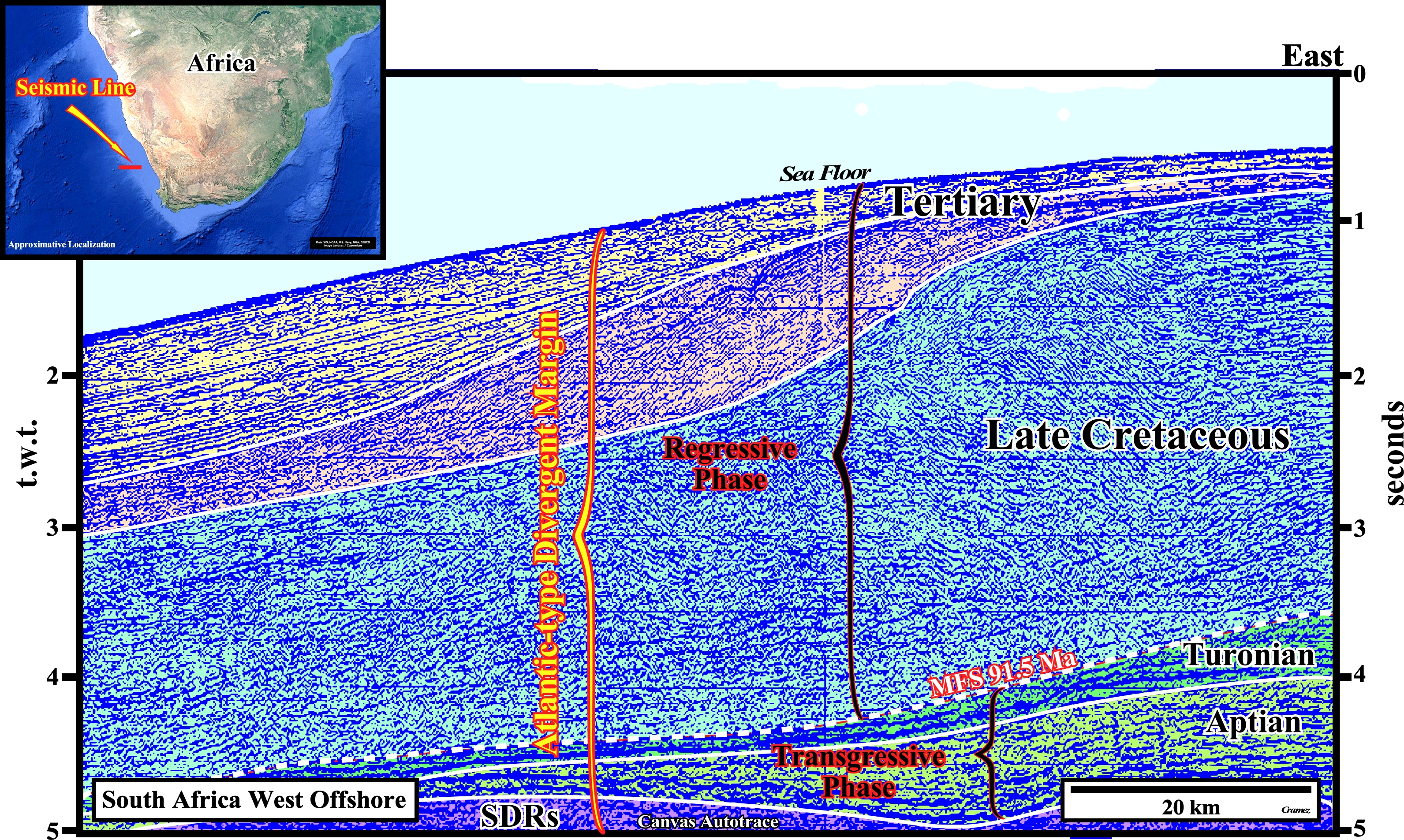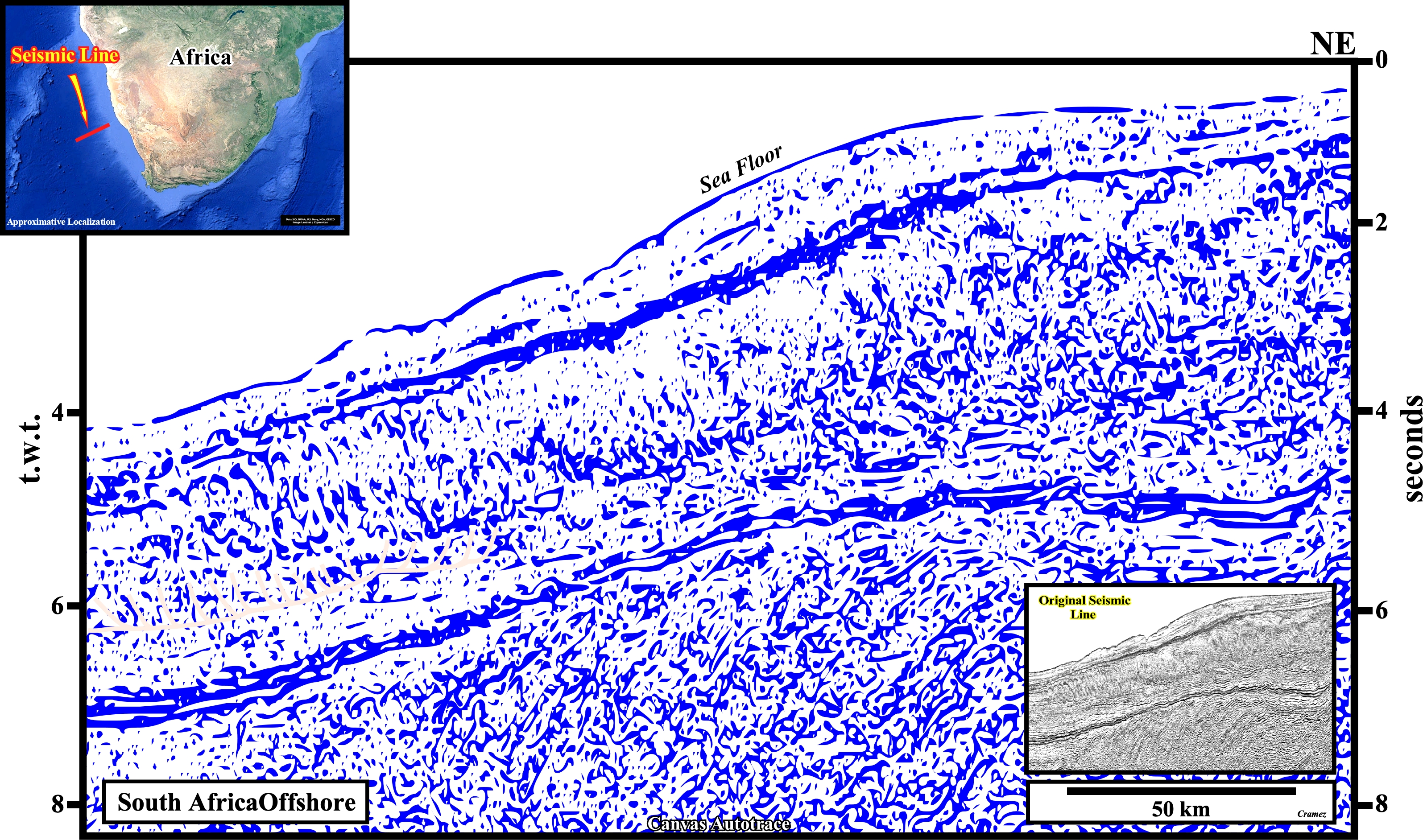.jpg)
.jpg)
South Africa Western Offshore
Namibia Offshore


The distal part of the Atlantic-type divergent margin is, clearly, visible on this tentative geological interpretation of a Canvas autotrace of a seismic line of the western South Africa offshore. Above the SDRs (acronym of Seaward Dipping Reflectors), which correspond to lava flows with few clastic intercalations, the transgressive phase of the post-Pangea continental encroachment stratigraphic cycle is, easily, recognized by its retrogradational geometry. The major flooding surface (downlap surface aged of 91.5 Ma) capped the transgressive phase separating it from the overlying regressive phase formed, roughly, by Late Cretaceous and Tertiary sediments. The seismic lines of this area are quite interesting not to illustrate the margin itself, but, as depicted on the next autotraces, to illustrated the relationships between the lava flows (SDRs), breakup unconformity (BUU) and rift-type basins.


On this tentative geological interpretation of a Canvas autotrace of a seismic line of the Orange geographic basin, SDRs (lava flows) are obvious. This autotrace suggests, also, that SDRs postade the breakup of the Gondwana lithosphere, in which rift-type basins developed during the preceding lengthening of the lithosphere (rift-type basins predate the breakup). Such hypotheses: (i) The lava flows, dipping and thickening seaward (toward the spreading centers, generally, volcanoes), postdate the breakup of the Gondwana and (ii) Rift-type basins predate the breakup of the Gondwana, are corroborated by the next Canvas autotrace.


On this autotrace it is quite evident the lava flows (SDRs) postdate the breakup of the Gondwana small supercontinent (southern continent of the Page supercontinent), as well as the sediments predating the breakup unconformity, which can be: (i) Basement or Paleozoic rocks ; (ii) Upper Jurassic / Lower Cretaceous sediments deposit during the lengthening preceding the the Gondwana lithosphere , which are, generally, deposit in rift-type basins (mainly, half-graben with a continentward vergence) and (iii) A local Lower Cretaceous sag basin (lacustrine or shallow water depocenters). Thus, on this area, from bottom to top, it is important to recognize the following unconformities: (a) Pre-rifting unconformity ; (b) Rifting unconformity ; (c) Breakup unconformity and (d) Top SDRs unconformity. As the sag basin is a local thermal subsiding area, in the majority of cases the breakup and rifting unconformities are coincident.
Send E-mails to carlos.cramez@bluewin.ch with comments and suggestions to improve this atlas.
Copyright © 2001 CCramez
Last update:
2022